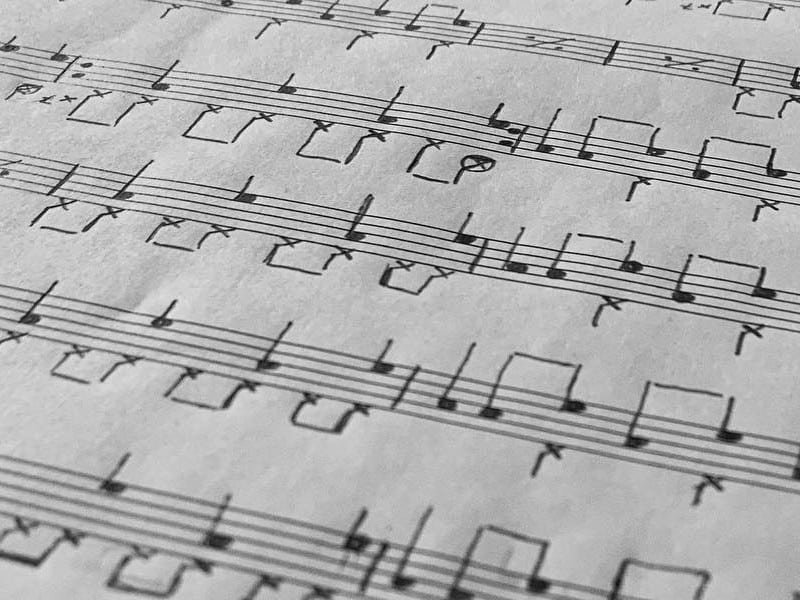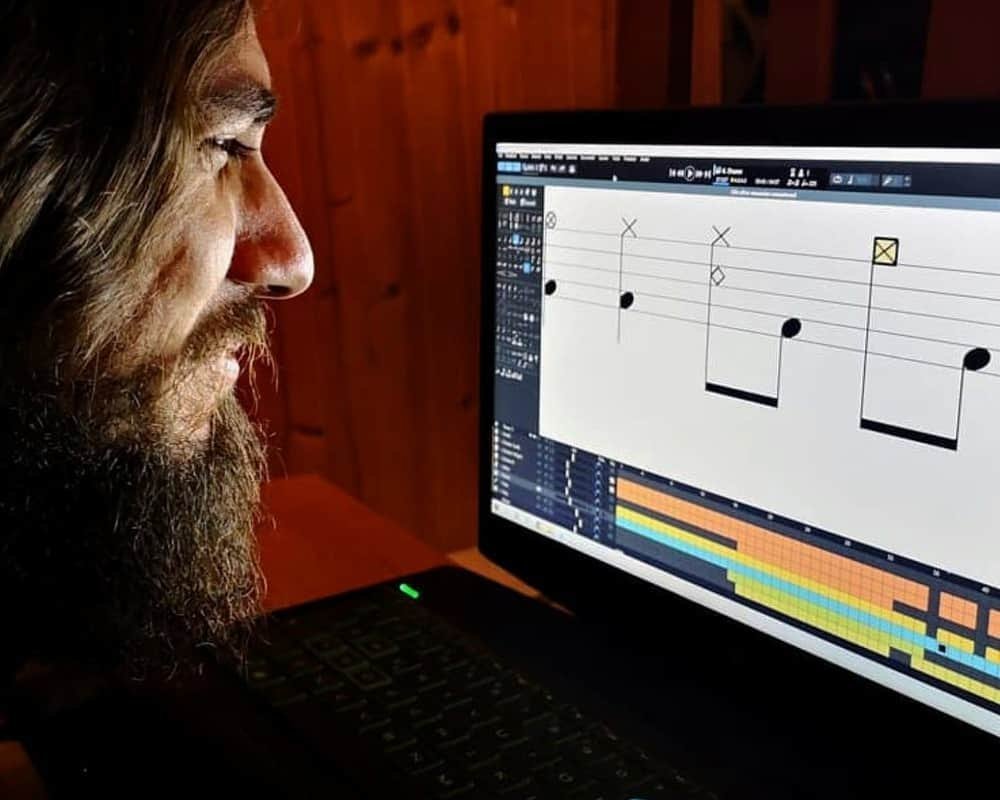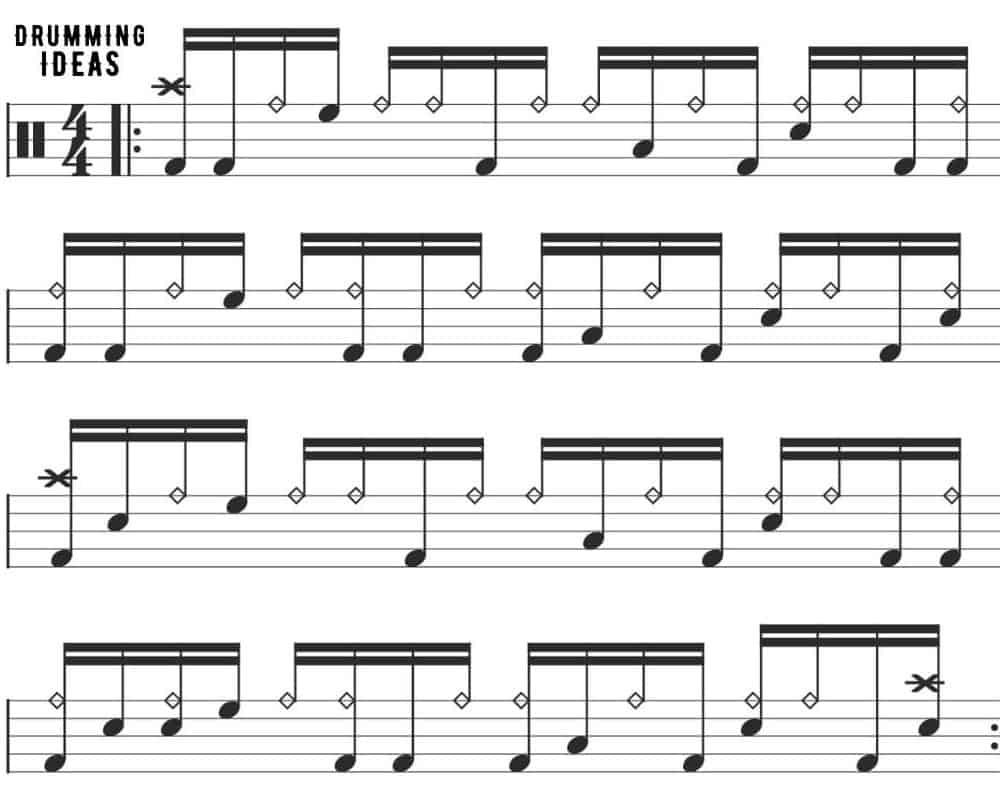How to Read Drum Sheet Music? – DRUM TECHNIQUES AND TRICKS

Drum sheet music can be difficult to read if you’re not familiar with it. The best way to learn how to read drum sheet music is to take a drum lesson from a teacher or online tutorial.
A drummer’s tablature is a method of recording a drum part that helps the drummer understand what he or she needs to play in a particular piece. Like regular sheet music, a tablature contains symbolic instructions that serve to tell the drummer what to do at any given time.

Tablatures for songs are available online and are often written by drummers for drummers. Reading the drum tab is not difficult, but a beginner can get confused. Each tablature contains explanations of the size of the song.
The tablature allows you to understand what is required of the drummer. All drummers use tablatures to learn new songs, from the most difficult to the easiest.
How to Read Drum Sheet Music?
Contents
Drum sheet music is a written representation of the drum part of a song. Unlike a lead sheet or vocal sheet, which includes the melody and lyrics, a drum sheet provides a graphical representation of the rhythmic and percussive elements of a song. While there is no standard way to notate drum-sheet music, there are some common elements that will help you make sense of it. Here are a few tips on how to read drum sheet music:
1. Take note of the time signature. The time signature will tell you how many beats are in a measure and what kind of note gets one beat. For example, 4/4 time means there are four quarter notes in a measure, while 6/8 time means there are six eighth notes in a measure.
2. Be aware of the tempo. The tempo is the speed of the music and is usually indicated in beats per minute (bpm). This will help you know how fast to play the notes.
3. Look for note values. The note values will tell you how long to hold each note. Whole notes, half notes, quarter notes, eighth notes, and sixteenth notes are the most common.
4. Identify the note heads. Note heads can be either open or closed. An open note head is round and empty, while a closed note head is round and filled in.

5. Know the difference between a rest and a note. A rest is represented by a symbol that indicates the silence of a certain duration. A note is represented by a note head, stem, and flag (or beaming).
6. Familiarize yourself with the drum set notation. Each drum is represented by a different letter or symbol. For example, the snare drum is typically notated as an “S”, while the hi-hat is notated as an “X”.
7. Practice reading drum sheet music with a metronome. A metronome is a tool that provides a steady beat, which will help you keep time while you play.
8. Don’t get discouraged if it seems confusing at first. Reading drum notes and music can take some time and practice to get the hang of it. But once you get the basics down, you’ll be reading drum parts like a pro in no time!
Do Drummers Follow Notes?
Most drummers would say they don’t follow notes, but rather, they feel the music. But for beginners, it is better to read drum notes for beginners. And then move on to regular drum music notes.
Of course, there are always exceptions to the rule, but for the most part, drummers rely on their natural sense of rhythm and timing to keep the groove going. After all, the drums are the backbone of any song, so it’s important that they stay tight and in the pocket.
That being said, there are certain moments in a song where it is important for the drummer to hit a specific note or accent. This is usually for dramatic effect, or to add a little flavor to the groove. But for the most part, drummers just go with the flow and let the music move them.
Tips
Don’t start with complex pieces. Start with a couple of simple songs with simple drum parts, like “Seven Nation Army” and “The Hardest Button To Button” by The White Stripes. Get used to reading the tablature. Increase the difficulty level of the pieces as you develop the skill of reading from the sheet. Another good song to start with is “Eye of the Tiger” by the rock band Survivor.
If you come across a notation on the tablature that you can’t read, you have plenty of opportunities to figure out what the songwriter meant: listen to the song and try to find the right notes, look online, or consult a tabber. But there’s usually a legend on the tablature that explains the notation.
Frequently Asked Questions
Answers to frequently asked questions.
How do drummers know what to play?
One way that drummers figure out what to play is by listening to the other instruments and finding a groove that fits. This can be done by playing along with records, or by jamming with other musicians. Drummers may also create their own parts by improvising or by using pre-written drum parts as a starting
Do drummers learn songs by ear?
Some drummers learn songs by ear and some use sheet music or tablature.
How Long Does It Take To Learn the Drums?
Drums are a skill that can be learned relatively quickly, with most people picking up the basics in a matter of weeks. However, becoming proficient at drums can take years of practice and dedication.
Also read:
Conclusion
Drum notation is much like music written for other instruments, but there are many important differences. Whether you are a beginner or an experienced performer, knowing how to recognize and interpret the notes, pauses, dynamics, and directions in a drum chart will help you become a better drummer and a stronger musician in general.
I hope this article has helped you understand how to read drum sheet music. Have fun learning and success, everyone!

